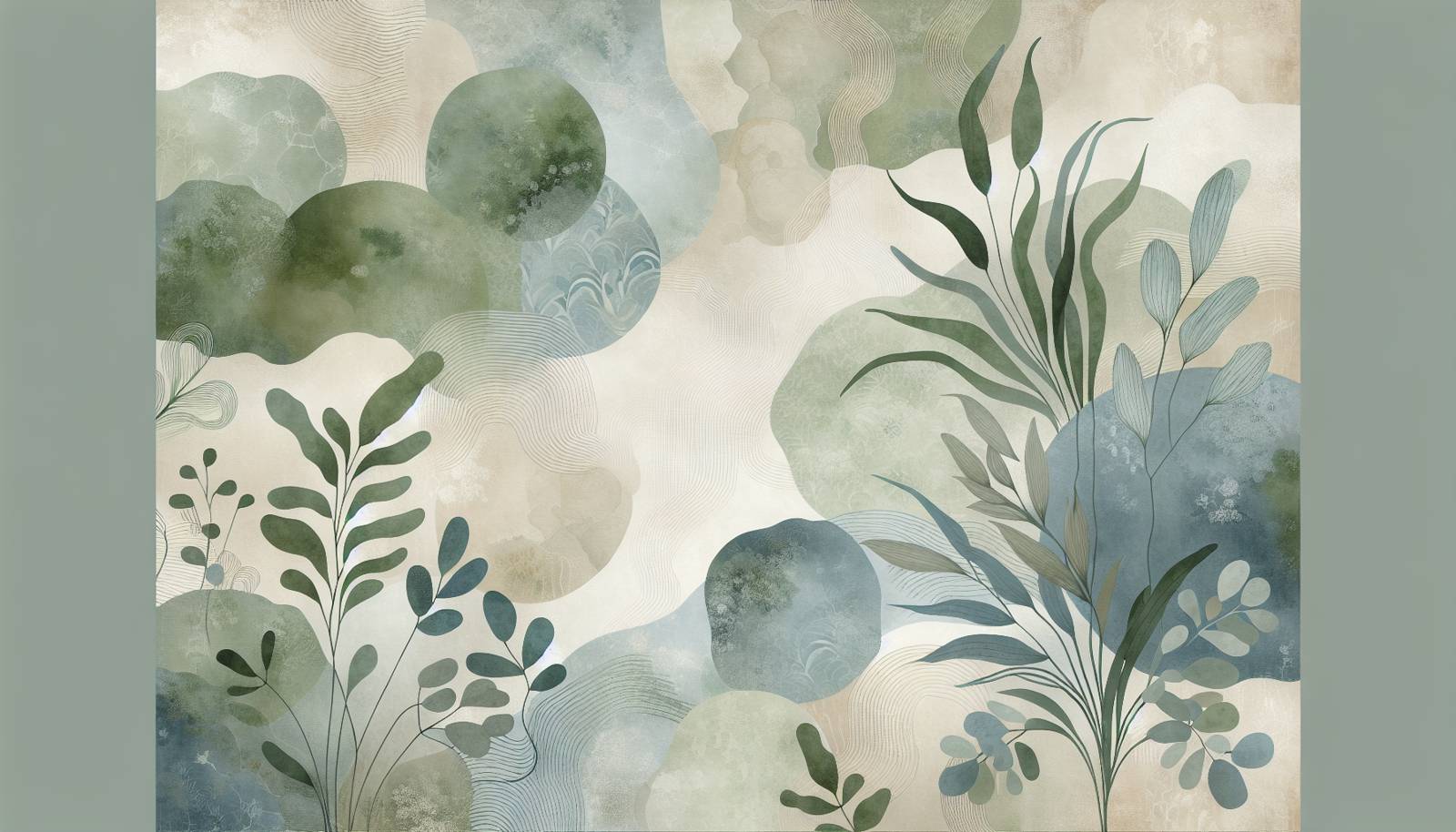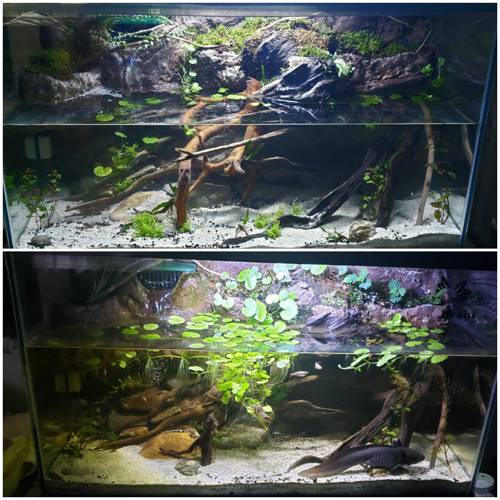
FAQ About Indoor Paludarium Plant Selection and Care

What is a paludarium?
A paludarium is a type of vivarium that incorporates both terrestrial and aquatic elements, creating a habitat for both land and water plants and creatures. It often mimics a natural environment with features such as waterfalls, ponds, or streams.

Which plants are suitable for a paludarium?
Suitable plants for a paludarium include both aquatic and semi-aquatic varieties. Common choices include Java Fern, Anubias, Cryptocoryne, Ficus pumila (Creeping Fig), and various mosses like Java Moss. It's important to select plants that can thrive in both high humidity and water environments.

How do I maintain humidity in a paludarium?
Maintaining humidity in a paludarium can be achieved by misting the environment with water regularly, using a fogger or humidifier, and covering the top partially to retain moisture. The right balance is essential to support the diverse plant life within.

Can I use regular soil for planting in a paludarium?
Regular garden soil is not recommended for paludariums as it can decompose and cloud the water, leading to poor quality. Instead, use specialized substrates designed for aquatic plants or a mix of gravel and aquatic soil to maintain water clarity and plant health.

How should I arrange plants in a paludarium?
When arranging plants in a paludarium, place taller plants at the back and shorter ground-covering plants at the front. This creates depth and dimension, allowing all plants to receive adequate light. Aquatic plants should be positioned where they can access submerged areas, while semi-aquatic plants should be near or above water surfaces.

What is the best lighting for a paludarium?
The best lighting for a paludarium varies with plant species, but generally, full-spectrum LED lights are recommended as they mimic natural sunlight. Light should be optimized to support both aquatic and terrestrial plant growth and should run for about 10-12 hours a day.

Do paludarium plants need fertilization?
Yes, paludarium plants may require fertilization to thrive. Liquid fertilizers designed for aquarium plants or slow-release nutrient capsules can be used to provide essential nutrients. It's important to avoid over-fertilizing, as excessive nutrients can lead to algae growth.

What water conditions are ideal for a paludarium?
Ideal water conditions for a paludarium involve maintaining a stable pH level, usually between 6.5 and 7.5. The water temperature should match the needs of the chosen aquatic plants, typically between 72°F and 82°F, with clear, well-circulated water to prevent stagnation.

How often should water be changed in a paludarium?
Water in a paludarium should be partially changed about every one to two weeks to maintain water quality and clarity. This helps in removing any accumulated toxins and replenishing essential minerals. The exact frequency may vary based on the bioload and size of the system.

Can I keep fish or amphibians with paludarium plants?
Yes, fish and amphibians can be kept in a paludarium, making it a diverse and dynamic habitat. However, it's crucial to choose compatible species that thrive in similar conditions and do not disturb the plants.

How do I control algae growth in a paludarium?
To control algae growth, maintain an appropriate lighting schedule, avoid over-fertilization, and ensure good water circulation. Introducing algae-eating species, such as certain snails or fish, can also help manage algae levels.

Is CO2 injection necessary in a paludarium?
CO2 injection is not strictly necessary for a paludarium but can benefit the growth of certain plant species by enhancing photosynthesis. It largely depends on the specific plant requirements and desired growth rate.

What are the common pests in a paludarium, and how can I manage them?
Common pests in paludariums include snails, aphids, and mites. Managing these involves maintaining a clean environment, introducing natural predators like predatory insects, or using safe, non-toxic pest control methods to prevent infestations.

How do I ensure proper drainage in a paludarium?
Proper drainage can be ensured by layering the bottom with a coarse substrate like gravel or lava rocks, allowing excess water to filter through. Additionally, pumps or siphons may be used to manage water levels and prevent oversaturation of terrestrial plant roots.

What temperature range is suitable for a paludarium setup?
A suitable temperature range for most paludarium setups is between 72°F and 78°F. This range accommodates various tropical plants and creatures, though specific needs may vary depending on the species present.

Can I grow carnivorous plants in a paludarium?
Yes, certain carnivorous plants such as Venus flytraps or sundews can thrive in a paludarium environment, provided they receive appropriate light and humidity. It's important to acclimate them to the specific conditions found in your setup.

What is the role of moss in a paludarium?
Moss serves both aesthetic and functional roles in a paludarium. It helps retain moisture, provides shelter for small creatures, and absorbs nutrients from the water. Mosses like Java Moss are popular due to their hardiness and low maintenance.

How can I prevent plant diseases in a paludarium?
To prevent plant diseases in a paludarium, maintain water cleanliness, avoid overcrowding, provide adequate light, and ensure proper airflow. Regular monitoring and removing diseased or dead plant material will also help maintain a healthy environment.

What substrates are recommended for aquatic plants?
Recommended substrates for aquatic plants in a paludarium include gravel, sand, and specially formulated aquatic plant soils. These substrates help anchor plants and provide nutrients without clouding the water.

How do I acclimate new plants to a paludarium?
To acclimate new plants to a paludarium, gradually introduce them to the setup by allowing them to adjust to the light, humidity, and water conditions over a period of several days. This reduces stress and helps promote healthy growth.
